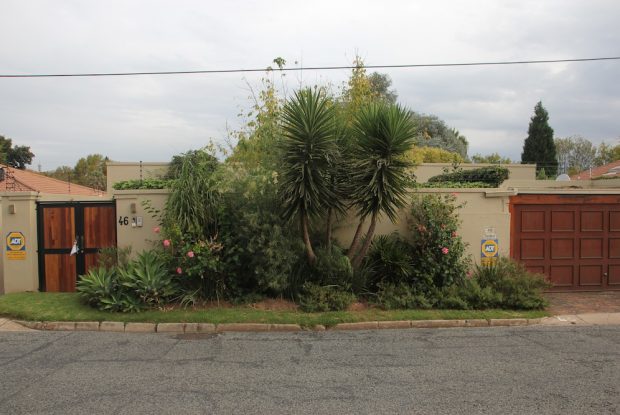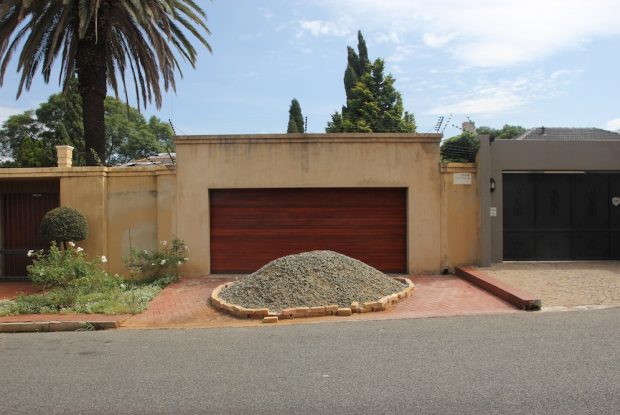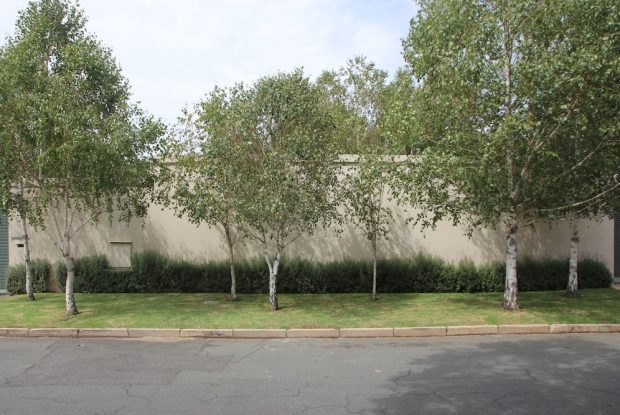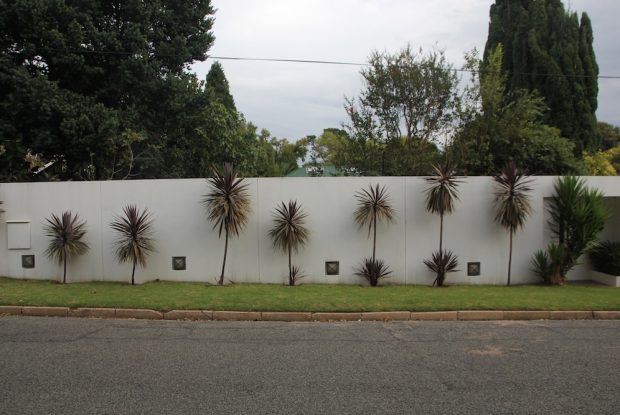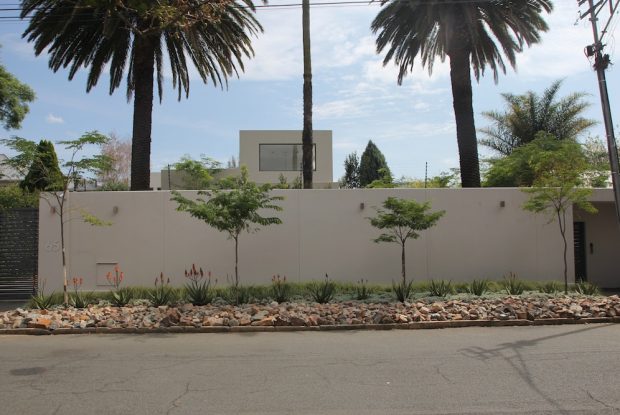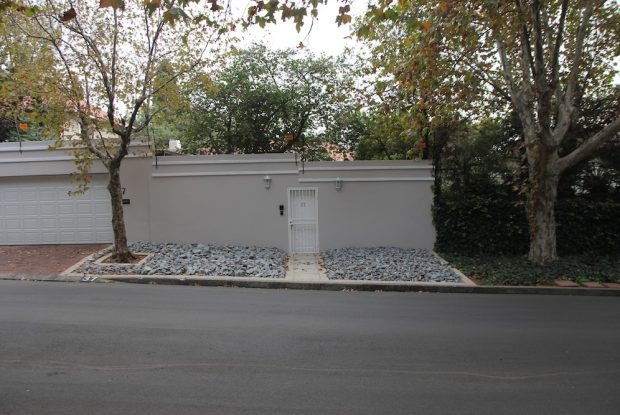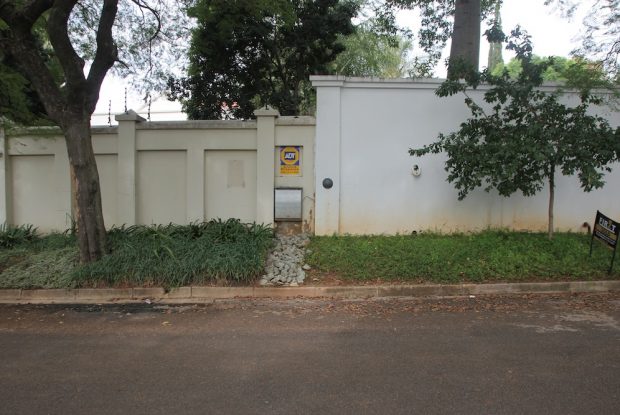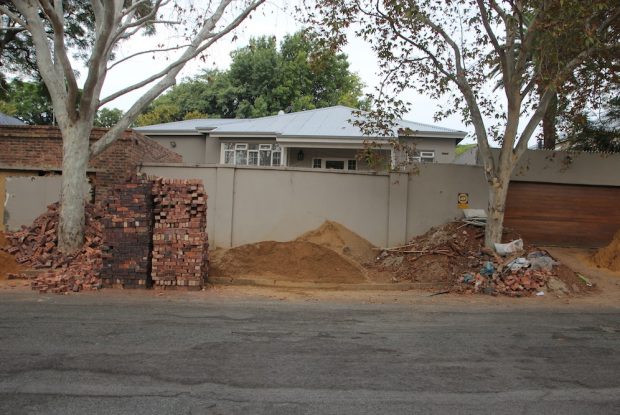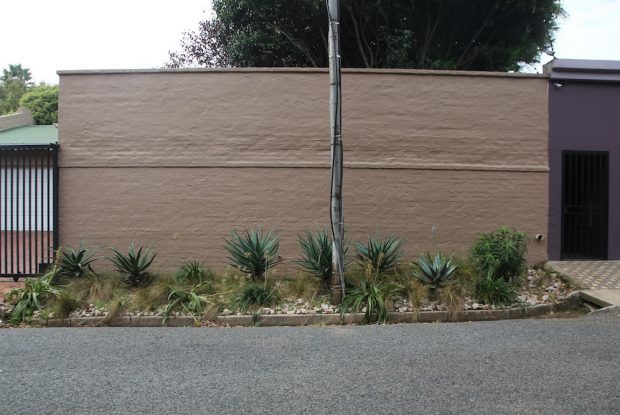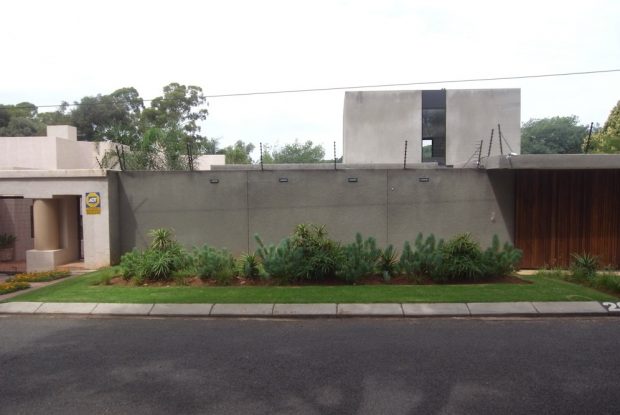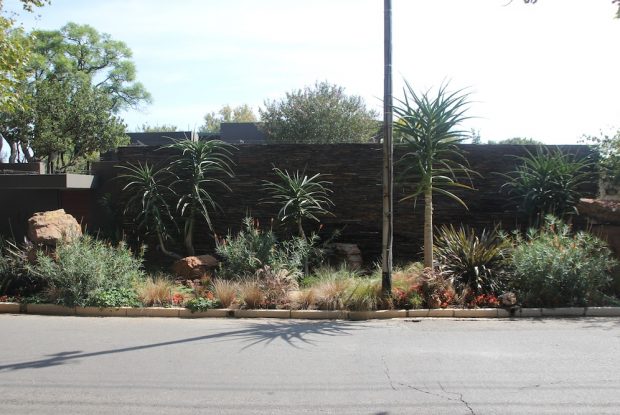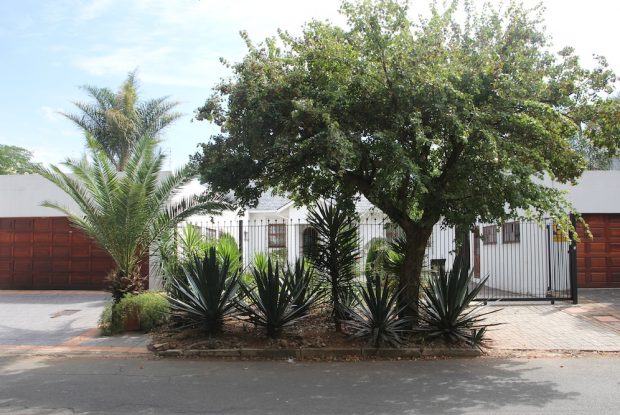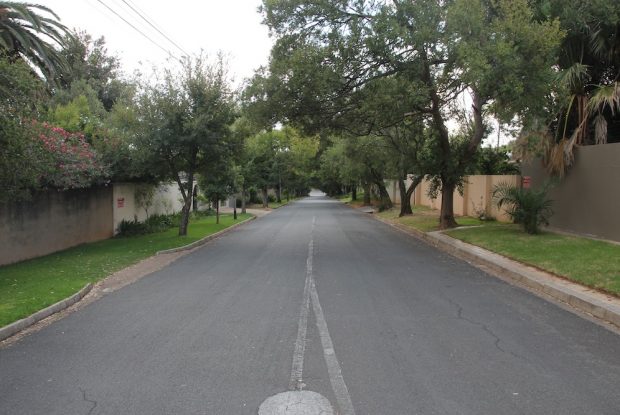In February and March 2013 we were invited by the Goethe-Institut of South Africa to conduct a six-week research residency exploring the notion of security in Johannesburg. A period of observation was followed by discussions with politicians, researchers, artists, architects, security guards, policemen and local residents.
We decided to concentrate on Johannesburg’s affluent northern suburbs. What infrastructures, architectures and patterns of usage have emerged or disappeared as a consequence of increased anxiety or changing attitudes towards physical safety and criminal activity?
We became interested in the decorative quality of many security measures, the shifting boundaries, appropriation and transformation of public space and an emphasis on the car as a primary means of transport (and how this is reflected in the architecture). We were particular interested in the way public pedestrian sidewalks are gradually being replaced by landscaped garden extensions and driveway walls.
The case of Johannesburg’s pavements is particularly interesting when we compare the city center and the suburbs. In both the city center and the suburbs the pavements have been taken over by the/a public – In one instance the pavement has been taken over by informal traders and in the other by local residents. In the city center this process transforms the pavement into a place for social interaction, in the suburbs it removes the possibility of this taking place. When a resident plants over a sidewalk, the space ‘feels’ private and out-of-bounds. If the shrubs are large or spiky enough it becomes physically out-of-bounds too. It is still a space that has been allocated as public space, but it now functions in a different way. The (or rather a) ‘public’ has reclaimed control over public space from the state, but excluded another public in doing so. You could argue that due to fears, founded or unfounded, that pavements in the city center also (psychologically) exclude some members of society.
I say all of this from my own subjective perspective that has been shaped by certain cultural conditions. We are aware that the very notion of pavements to regulate safety and provide space for pedestrians is a concept that was brought to South Africa with colonialism, and now once again with our own European perspective. We are told that in Soweto there is rarely any need for a pavement.
The changing sidewalk could also be seen as a new infrastructure, an invitation to use the space in a different way. We noticed how some gardeners would use the lawnment (grassed over pavements) to enjoy a break from work or wait for the bus at the end of the day. There is nothing but your sensibilities stopping you picking the lavender that has been planted in place of the path, or having a picnic on what is essentially public space. In practice it might be different. When we organised a picnic on the lawnment, one participant quite rightly suggested that it would be a more interesting experiment if we had all been black.
In some ways we like the way in which individuals are allowed to landscape the sidewalk. They are being public on public land. The local by-laws permit planting of any kind, as long as a 1,6m pathway for pedestrians is preserved. This isn’t something that would be readily accepted in Stuttgart. It’s nice to catch a glimpse of the personality behind the wall, it’s just unfortunate that the way in which this is done doesn’t always consider those who need to walk in the area, such as gardeners and domestic helpers, or possibly their own needs in the future, or those of their children. It’s a trade-off. The State saves public funds that would otherwise be spent on maintenance, while holding on to higher-rate tax paying residents by not interfering with the way they want to shape and control their environment. The question that needs to be asked is who has the right to shape public space? And how should this process be managed, controlled, monitored, regulated, or otherwise? How do you deal with private agendas in public spaces?
There will always be a place for pedestrians in the suburbs, partly out of necessity (those who can’t afford to drive in a car, those who need to walk a dog, etc). Walking will always be the most democratic form of transport. The question is where this place is. It’s a question of infrastructures and cultural habits, both of which respond to one another and are in a constant state of flux. Who walks, why and how? How might this change in the future? Is the walkers place in the middle of a road or on a pavement?
Extract from an interview held with Miriam Daepp of the Goethe-Institut South Africa. The full transcript can be found here: http://www.treacletheatre.co.uk/portfolio/?p=3340
Towards the end of our stay we conducted a series of interventions. These included ‘white wo/man walking’, a 13km walk across the city in a cardboard car, ‘cat-walk’, a puppetry project using residential walls as the stage for a promenade performance, and ‘A good Friday walk’, culminating in a picnic on the lawnment and a barefoot walk along the road-reserve.
We would like to thank Cara Snyman, Francois Venter, Tom Wickmann, Gitte Zschoch and everybody else working at the Goethe-Institut, Wayne Minnaar and the Johannesburg Metropolitan Police Department, Timothy Truluck, Paul Tilsley, Mongi and Kyla Davis, Mavuso, Tali, Gordon Froud, Ismail Farouk, Anthea Moys, Doung Anwar Jahangeer, Kim Gurney and Leonie Steckermeier and Tessa Abramovitz for their support and assistance during our residency.
